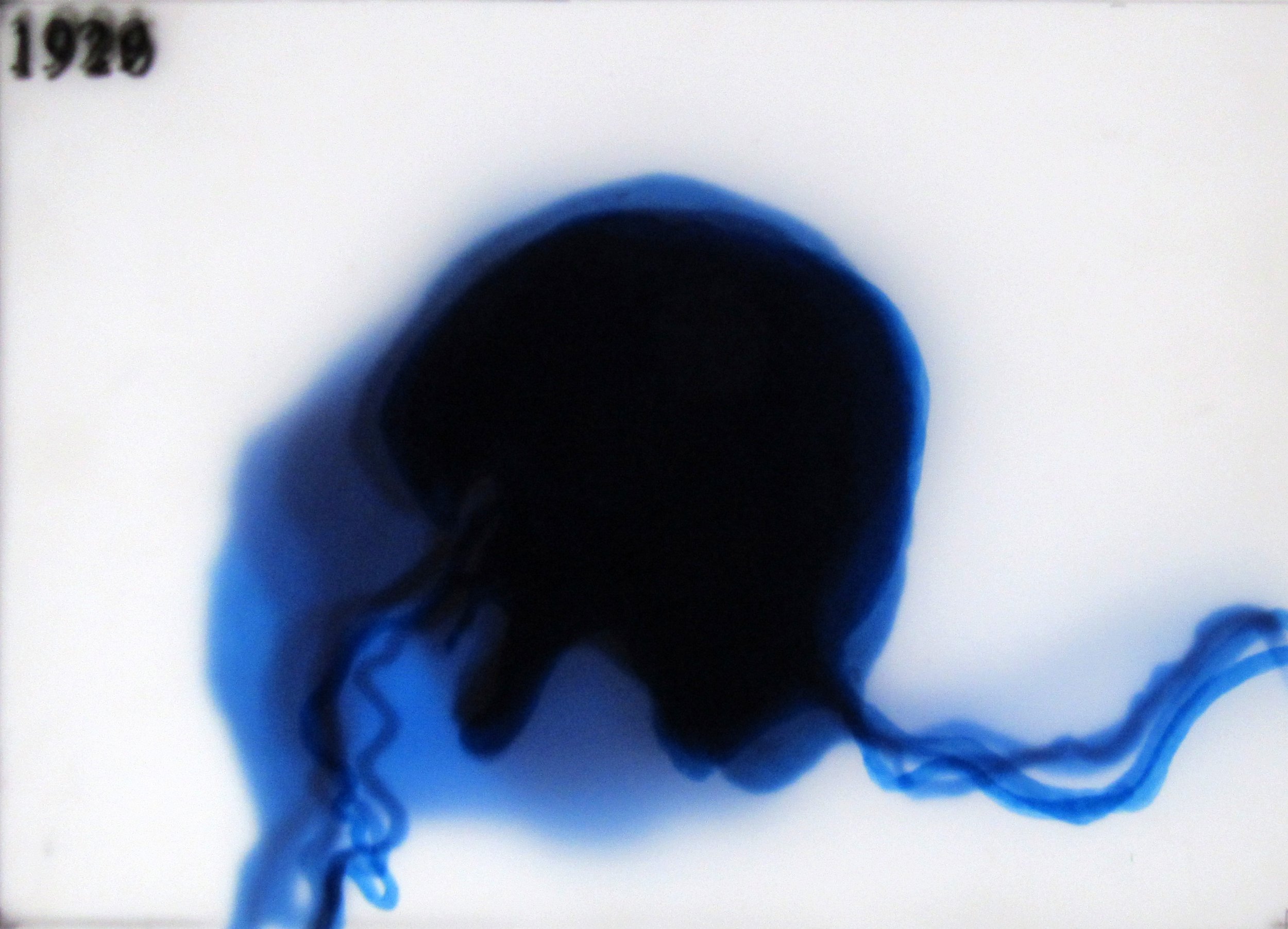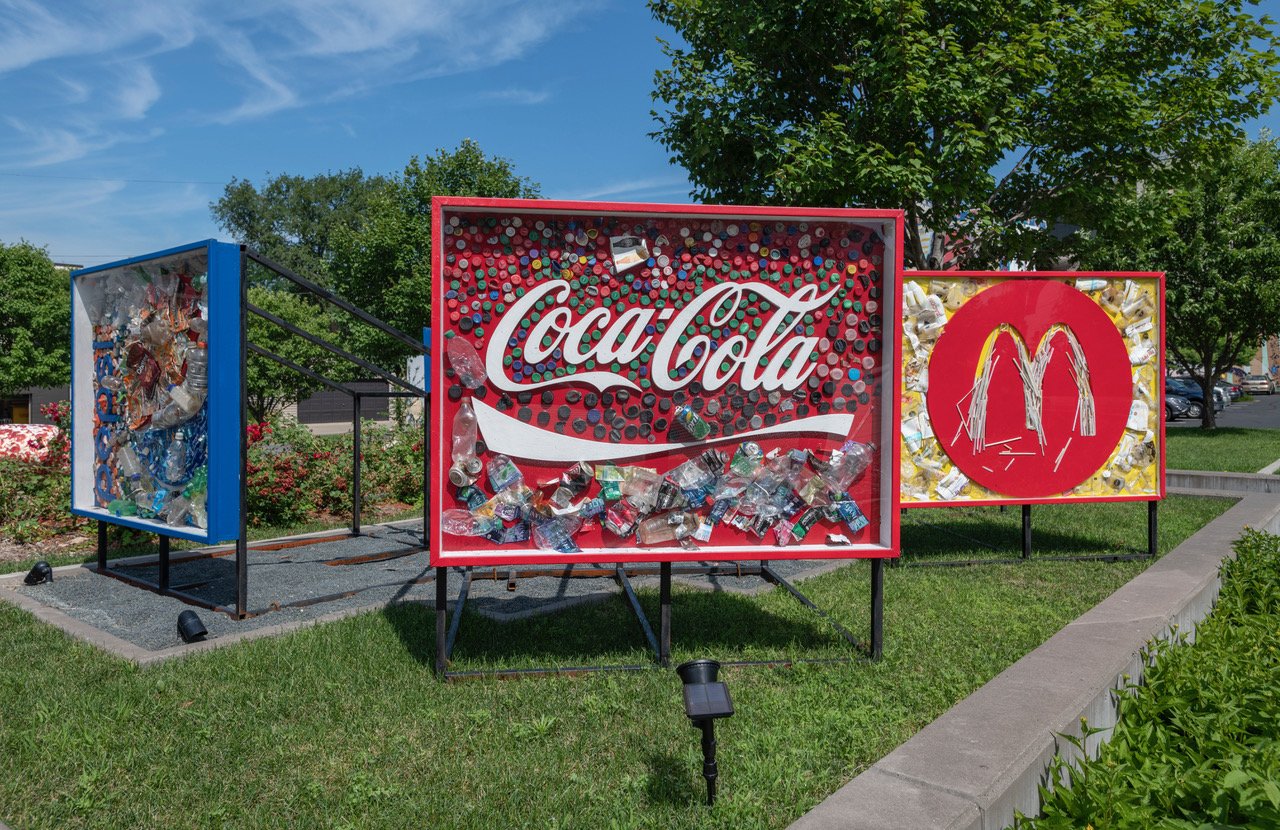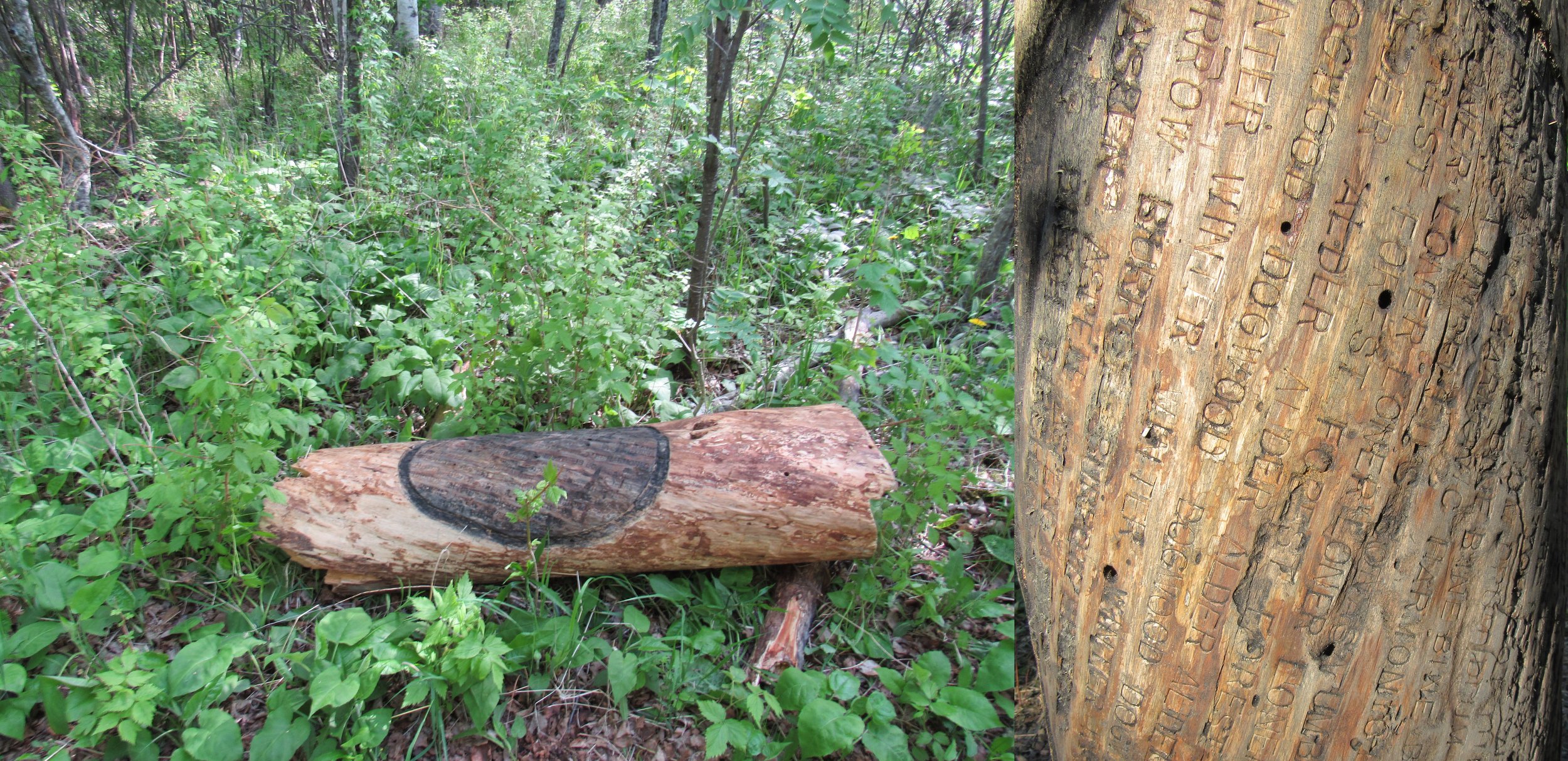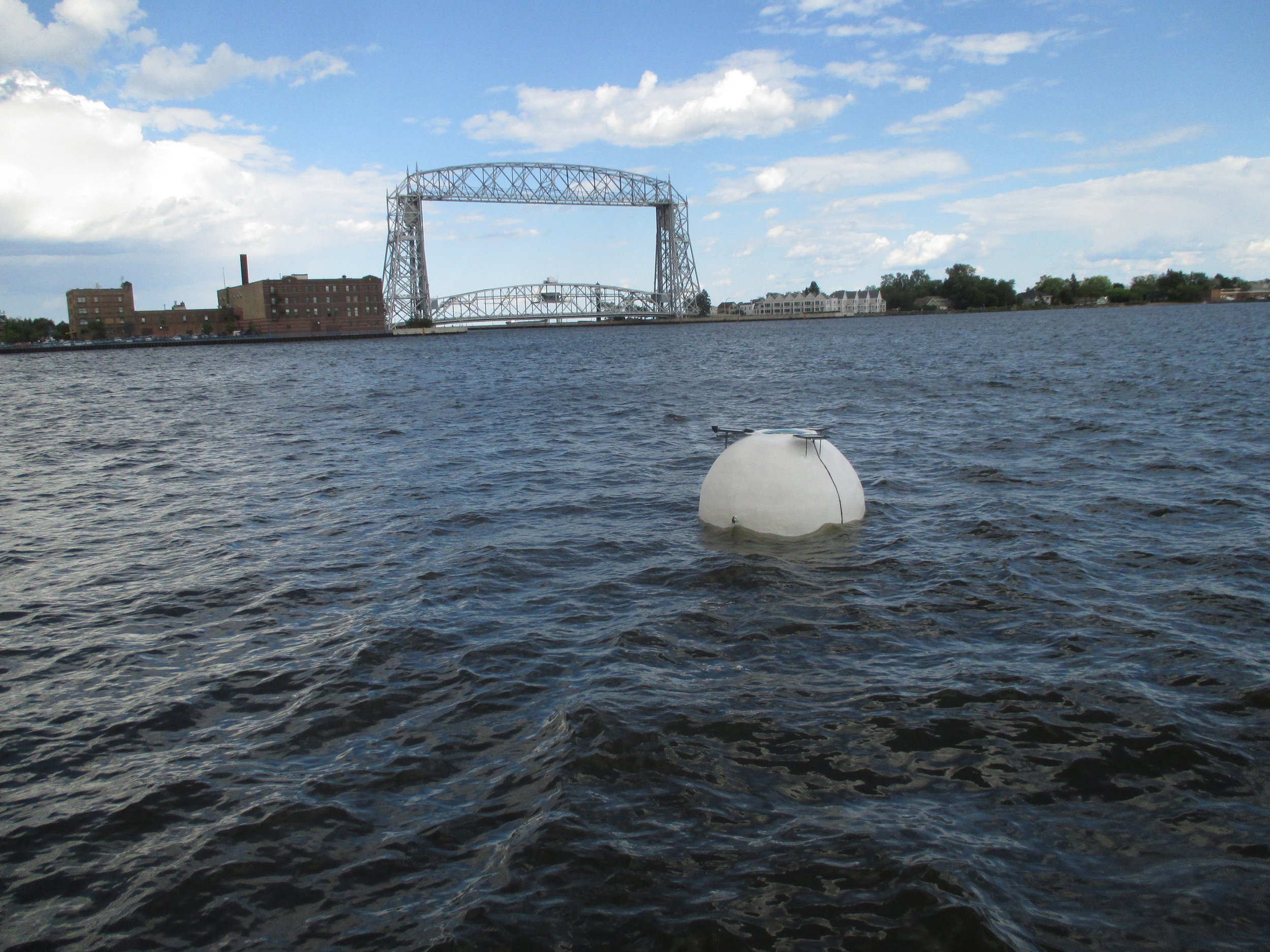The Art of Sean P Connaughty
Painter and Multi-media Artist
Sean Connaughty is an artist and teacher living in South Minneapolis, Minnesota, USA. He is the chair and co-founder of the collective Friends of Lake Hiawatha Bde Psin. His socially engaged art projects and exhibitions seek to mitigate anthropogenic impacts on ecologies. He uses public art as a catalyst to foster repair and reciprocity by working alongside communities and government agencies. Connaughty received a 2017 Forecast Public Art development grant for his Lake Hiawatha Visioning Project, a 2018 McKnight fellowship, and an 2013 Artist Initiative grant from the Minnesota State Arts Board for his work Ark of the Anthropocene. He is a graduate of both MCAD and the Savannah College of Art and Design (SCAD), Connaughty is a lecturer in the Department of Art at the University of Minnesota, Twin Cities.
Above: “Bison at Bde Psin” Sean P Connaughty 2023 gouache on paper
Above:“Bag #500” Sean Connaughty, 2021 acrylic on canvas panel, 11x14”
Witnessing the present
Witnessing the present: Being on the ground, observing conditions and developing a complex and reciprocal relationship with a place and its inhabitants is central to Sean Connaughty’s practice. For the past decade his labor and art practice has been focused on Bde Psin Lake Hiawatha in a stewardship relationship. It is one of the famous Chain of Lakes in Minneapolis and is simultaneously Minneapolis’ most biodiverse and polluted lake. The Lake is just a few blocks from the home Sean lives in with his partner Melissa in the Standish neighborhood. What began as a solo trash cleanup effort at the Lake in 2014, has developed over time into a complex relationship with the place and the local community and eventually developed into a stewardship agreement with the Minneapolis Park and Recreation Board. Sean leads a comprehensive restoration effort in and around the impaired lake with the group he co-founded Friends of Lake Hiawatha Bde Psin (FOLH). Since 2014 the artist and FOLH have removed over 12,000 lbs of plastic trash from the Lake, planted thousands of native plants, led community events, engaged in extensive advocacy and became involved in working for accountability and change with the numerous agencies and environmental regulations governing the Lake.
Above Painting Description:“Bag #500” by Sean Connaughty, 2021 acrylic on canvas panel, 11x14” This small narrative painting highlights Sean’s perspective on the contemporary situation at Lake Hiawatha Bde Psin in Minneapolis. The many species of animals represented in the painting were each observed at the Lake. At the time this painting was being created, Sean and FOLH were approaching their 500th bag of trash removed from the Lake and the milestone of 10,000 lbs. This milestone has since been passed and the current trash total now exceeds 12,000 lbs. as of 2024. Data from the artist’s comprehensive Lake Hiawatha trash survey in 2019 shows that the top corporation found amongst the surveyed lake trash can be attributed to the PepsiCo-Frito-Lay corporation. Pepsi is followed closely by CocaCola, followed by McDonalds. Their plastic trash can be seen littering the painting. When Minneapolis was hosting the Super Bowl in 2019, a large Pepsi banner was flown over the city. Golf course pumps can be seen in the background. The pumps discharge hundreds of millions of gallons of phosphorus laden water into the impaired lake annually. The green coloration of the water represents toxic algae blooms and the high phosphorus levels the Lake experiences due to pollution. This painting was somewhat prophetic because in 2022/23 the Lake experienced the worst water quality on record, extensive algal blooms and suffered a large fish kill causing disruption to the food web of this, Minneapolis’ most biodiverse lake. you might also notice in the painting, as in life, that the elevation of the Lake is higher than large portions of the historic golf course. This narrative painting was inspired by the work of the artist’s friend Jim Denomie.
Above: “Lake Hiawatha Bde Psin Topography Study” Sean Connaughty 2024 gouache on paper 11x14” This drawing was created after examining lidar imagery, topography maps, and using personal knowledge of the site.
Above: “pipeshed” Sean Connaughty 2019, ink on mylar 14x11” This is an illustration of the stormwater drainage system that brings much of the trash to Lake Hiawatha Bde Psin.
Above: Selected Portraits of Bde Psin’s wildlife residents: This series of gouache paintings by Sean P Connaughty are portraits of individual wildlife residents at Bde Psin Lake Hiawatha. The paintings are mostly based on photographs taken by the artist at Bde Psin Lake Hiawatha. Gouache on paper, 11x14” ea. Sean P Connaughty, 2023-24.
Bde Psin’s wildlife residents are surviving in a corridor along Minnehaha Creek (Wakpa Cistinna) and the Mississippi River despite the historic destruction of the ancestral Dakota wild rice beds after colonization and ongoing egregious pollution and habitat destruction. These paintings cause us to see them, and to become in part responsible for their continued survival as the community and agencies decide the future of this public space. Will the changes we make end the egregious pollution and allow for the continued survival of our wildlife residents?
Seeing Bde Psin’s Wildlife Residents
Below: gouache paintings by Sean Connaughty. (click to enlarge)

Bde Psíŋ
1854-1929
Above: “Bde Psíŋ / Rice Lake 1854-1929”, Sean P Connaughty 2019. Ink on layers of frosted mylar, backlit. 11x14”ea.
Right: The separate layers of “Bde Psíŋ / Rice Lake 1854-1929” presented individually.
Above: “Lake Hiawatha 1938-2019” Sean Connaughty 2019 ink on frosted mylar backlit.
Description: Ever since the 1929 dredging of Bde Psin Rice Lake, the filling of wetlands, loss of floodplain function, the channelization of Minnehaha Creek and the walling of the Lake’s shoreline, the Lake has lost much of its ability to adapt to changing conditions. When you observe the changes in the shape of Rice Lake Bde Psin and Minnehaha Creek over the years of 1854 -1929 which is 75 years, you can see that the Lake was continually adapting and changing its shape in response to climatological influences until the Lake and Creek were reshaped in the 1930s. When you observe the changes in the Lake from 1934 to the present which is 90 years you see that the Lake and Creek have been fixed into place and have little capacity for adaptation. This is due to the anthropogenic changes made in the landscape and waterways by dredging, filling in of wetlands, pumping of the floodplain, and the straightening of Minnehaha Creek. This is a clear demonstration of the loss of climate resilience in the landscape and waterways. This loss of resilience and adaptability result in the loss of flood resilience, loss of water retention during drought, erosion, sedimentation, loss of biodiversity, increased nutrients, increased algae and bacteria, increased pollution, and ultimately results in the problematic conditions we are seeing today at Lake Hiawatha Bde Psin. The changes necessary to address these problems will hopefully implemented soon.
Above: “Bde Psin Rice Lake prior to colonization” with modern street overlay ink on mylar backlit by Sean Connaughty 2020
Above: Installation view “Rice Lake/ Lake Hiawatha wetland map 1874-2022” by Sean Connaughty 2020
Above: detail of “Rice Lake/ Lake Hiawatha wetland map 1874-2022” ink on mylar backlit by Sean Connaughty 2020
Bde Psíŋ
In 2022, Dakota Elder and scholar, Dr Chris Mato Nunpa addressed the nine elected commissioners of the Minneapolis Park Board saying what is now called Lake Hiawatha should be called by its original Dakota name Bde Psíŋ. That is why the artist chooses to refer to the Lake as Bde Psíŋ.
In the Dakota language Bde means lake and Psíŋ means wild rice. Accounts from Samuel R Pond’s 1834 book “the Dakotas or Sioux as They Were in 1834” shows that Bde Psíŋ was a major food source for local Dakota communities. These and other accounts and historic photographs show that wild rice (psiŋ) used to grow in abundance at Bde Psin as late as the 1920’s. Dakota Peoples have lived in this area for millennia prior to colonization and the descendants of that community still reside here today and have participated and collaborated with Sean, Friends of Lake Hiawatha, and other community groups and neighbors in the multifaceted restoration work and advocacy being done at, and on behalf of Bde Psíŋ.
Wild Rice has not grown at the Lake since it was dredged and reshaped by the Park Board in 1929. Historic and ongoing anthropogenic impacts, compounded by a changing climate, have resulted in water too polluted to support wild rice (psiŋ). The artist believes that Bde Psiŋ will soon be ready to support wild rice again.

Viewing Place Across Deep Time
Above: “Mammoth at Bde Psin”: Sean P Connaughty 2024. gouache on paper, 11x14”
Viewing Place Across Deep Time
This current series of gouache paintings by Sean Connaughty hypothesize what the place that Bde Psin Lake Hiawatha now occupies might have looked like during the major transformative epochs the land and its changing inhabitants have experienced since the Earth’s formation. Geological and anthropogenic forces have shaped this place across deep time from the Archaean to the Anthropocene. Research, community conversation and on the ground observations have helped develop the artists growing understanding of Bde Psin Lake Hiawatha across time.
This series of paintings imagines Bde Psin Lake Hiawatha at different epochs in Earth’s history. They are part of a continued attempt to gain perspective on this place and arise from the artists process of experimenting with newly available artificial intelligence image generators as a tool to create source imagery for this series of hand made paintings that contemplate one place across deep time.
“Bde Psin in the archaean 3.8 bya”
gouache on paper SPC 2024
“Bde Psin in the ordovician 485.4 mya”
gouache on paper SPC 2024
“Great River Warren Falls 10,000ya”
gouache on paper SPC 2024
“Bde Psin in the cryogenian 750 mya”
gouache on paper SPC 2024
“Bde Psin at the end of the permian 252 mya”
gouache on paper SPC 2024
Above: Bde Psin in the cretaceous 100 mya. Sean P Connaughty, gouache on paper, 2024
“Bde Psin in the ediacaran 600 mya”
gouache on paper SPC 2024
“Bde Psin at the Last Glacial Maximum 22,000 ya”
gouache on paper SPC 2024
“Great River Warren Falls 10,000ya”
(version 2) gouache on paper SPC 2024
Note: Great Glacial River Warren Falls existed 10,000 years ago near what is now called St Paul Minnesota. This ancient waterfall has retreated over time to split into three present day waterfalls including; Owamni/St Anthony Falls, Minnehaha Falls and Hidden Falls.

Truth Telling and Accountability
Truth Telling and accountability: Projects, artworks seek to render assistance to an ecology in need using art, advocacy, and community engagement
”Anthropocenic Midden Survey Lake Hiawatha Trash Survey 2019” provides comprehensive data and draws our attention to the the top four corporations that generate the plastic trash found in Lake Hiawatha Bde Psin.
Above: Trash items were sorted and cataloged according to type, material, brand name and parent corporation. Volunteers from the community and students from MCAD and the UofM helped sort and catalog the trash materials. The data was compiled into the trash survey document. The sorted trash items were prepared for display in the McKnight recipients exhibition at MCAD.
Above: The trash collected by the volunteers was then taken to MCAD where every item was sorted and cataloged. This effort was coordinated with the indispensable help of Kerry Morgan, who worked closely with Sean as part of his receiving a McKnight Foundation fellowship in 2018. Also indispensable was the help of Sean’s student intern Matt Fistler who assisted tirelessly throughout the process alongside many other helpers.
Above: the first stage of the “Anthropocenic Midden Survey Lake Hiawatha Trash Survey 2019” involved over 100 volunteers collecting trash from Bde Psin Lake Hiawatha on Earth Day 2019. in 3 hours volunteers removed 350 lbs of plastic trash from the Lake and its shores.
Above: The logos of the top four corporations were constructed using the CNC router at the UofM Department of Art’s XYZ Lab. The sorted items belonging to each corporation were placed within the logos for display in the MCAD Sculpture Garden.
The completed sculptures were installed in the Sculpture Garden and the work was publicized. Several media outlets covered the story. The sculptures remained on display for one full year. Letters were sent to the top four corporations seeking assistance in obtaining stormwater treatment for Lake Hiawatha Bde Psin. Each corporation declined. PepsiCo-Frito Lay, CocaCola, McDonalds and Mars Corp.

Imagining our Future
Imagining our future: As we work to restore wildlife connectivity our work at the Lake is moving us towards future of recovery it is helpful to imagine what the future could look like. A thing cannot be created until it is first imagined. What would need to be done to restore the migration route for bison from South Dakota to Bde Psin? along the Minnesota River Valley following the course of the ancient River Warren to the source land where Lake Agassiz once drained.
”Untitled” (Ford Dam) Sean Connaughty 2020 Gouache on paper
”Untitled” (bison) Sean Connaughty 2020 Gouache on paper
”Untitled” (stormwater) Sean Connaughty 2020 Gouache on paper
Above: Lake Hiawatha Visioning Drawings 2016-2022.
Background: These are some of the dozens of drawings the artist created reimagining Lake Hiawatha Bde Psin in parallel with the public process of the Minneapolis Park Board as it reconsidered the practicality, sustainability, and ecological impact of the current use of the public space surrounding the Lake. The Hiawatha Golf Course Area Plan was a contentious public process taking eight years. Stakeholders in this public space weighed in with differing desires for the future of the park. from those who wanted to maintain the historic 18 hole golf course at any cost and those who wanted no golf on the property at all. In June of 2022 the elected commissioners finally voted to pass a compromise plan which will restore ecological function to the floodplain while maintaining a reduced nine hole golf course. After the flood of 2014 overwhelmed the pumping system and flooded and incapacitated the golf course, the Park Board began the public process of reconsidering the use of the land. Coinciding with his nascent involvement with the Lake, the artist saw this as a critical and historical moment to participate in the public process to protect and preserve biodiversity at the Lake, restore public access and an opportunity to finally mitigate the direct pollution sources degrading the Lake. Sean began the process with no interest in preserving golf, but after becoming aware of the historical significance of the sinking golf course came to support the compromise plan and the continuation of golf on the site if the ancient wetland could be restored, biodiversity preserved, and pollution sources mitigated. It was a very difficult public process for everyone and brought to light the key problems of our time. Revealing historic injustices and their ongoing consequences from ecocide to the attempted genocide of Dakota Peoples and racial injustices perpetrated on this site against Black communities. The consequences of these injustices are exacerbated by the changing climate and is forcing us to confront these very uncomfortable truths. The artist is honored to have been a part of this difficult public process and to have been a small part of these overdue community-wide discussions. The artist, along with community members are focusing efforts on restoration on the land opposite the golf course until the plans are finally implemented.

Repair and Reciprocity
Above: Sean Connaughty has partnered with Highpoint Printmaking Center since 2019 to develop and implement programming to bring 5th graders to Lake Hiawatha Bde Psin. The students aided the Lake by planting native seeds around the shores.
Above: “The Living Catchment” is part of a collaborative project working with The Minneapolis Park Board and the City of Minneapolis to capture trash emptying into Lake Hiawatha Bde Psin through a major stormwater outfall on the Lake’s north side. A trash capturing device was installed in June of 2023. In the spring of 2023, Sean’s UofM Art and Ecology students designed and created an art installation made of living plants. The work was an experiment in using plants to reduce phosphorus loading from stormwater outfalls. While also creating habitat and a food source for wildlife. due to high water in 2024, the art installation is now underwater. It remains to be seen if any of the plants will survive this long inundation. The trash capture device is working well and capturing trash from the major stormwater outfall. This is much to the relief of volunteers who can now focus more on restoration work rather than trash mitigation.
Above: Restoration work from 2020 to the present at Bde Psin. Sean Connaughty and Friends of Lake Hiawatha Bde Psin volunteers have been transforming areas of turf at the delta habitat into native meadow, prairie and wetland habitats. beginning in 2020. This has involved working collaboratively with the Park Board in selecting and growing numerous species of native plants enriching the soil and working with our Dakota and Indigenous partners to restore plant medicines and foods that have not been present since the destruction of the habitat in 1929. Dakota Plant Nations expert Nicky Buck invited FOLH volunteers to Tinta Wita (Prairie Island) to harvest seeds for the restoration.

Above: “Nest Construction for Bde Psin’s Owls” Sean P Connaughty, 2023 Owl’s nest at Bde Psin. The branch construction was displayed at the University of Minnesota Katherine E Nash Gallery in the fall of 2023 and after the exhibition the nest was installed in a large eastern white pine at the Lake. It is a tree which had hosted a family of Great Horned Owls in previous years. The Owl family died after exposure to Avian Flu in 2022. Some surviving owls have remained in the area, which inspired the installation of this nest in December 2023.

Above: “Nest #3”, 2021, branch construction by Sean Connaughty at Sugarloaf Cove Nature Center, Tofte, MN This was part of a series of artworks created by the artist during an artist residency with Grand Marais Art Colony. They included three large branch construction nests along the beautiful north shore.

Above: “Drumming Log for Ruffed Grouse” Sean P Connaughty 2021, Hollowed out spruce log with inscribed text. At Sugarloaf Cove Nature Center, Tofte MN. created during a Grand Marais Art Colony artist residency. This piece was placed in the habitat of the ruffed grouse in the area. Male Ruffed Grouse, who select a hollow log on which they perform a drumming sound by beating their wings on their chest in order to attract a mate. The log helps to make the drumming resonate and carries the sound. The artwork still persists as of 2024. see process photos below:

An ark for the Anthropocene
The Ark of the Anthropocene is a 4,000-pound, 7-foot diameter biosphere sculpture created by Sean Connaughty in 2014. Constructed from reinforced concrete, glass, steel, and organic materials, the Ark is designed to coexist symbiotically within a body of water.
It houses a self-sustaining ecosystem engineered for buoyancy, providing the optimal balance of air, water, soil, minerals,nutrients, and light for photosynthesis.
With the help of community members and the essential engineering support of Joel Edward Sisson as well as funding from the Duluth Art Institute, the Weisman Art Museum, the Minnesota State Arts Board, and a successful community-driven Kickstarter campaign, the Ark became a reality.

Coming Full Circle
Other Selected Bodies of Work by Sean P Connaughty 2006-2024
(click on images below for external links to additional selected documents, videos and images)
Above: “Oak Pod” 2011 branch construction at Silverwood Park. Sean P Connaughty
Above: “A History of the Earth” (edition) Sean P Connaughty with Matt Zaun, 2005
Above: “Bde Psin - Rice Lake 1854-1929” ink on backlit frosted mylar, Sean P Connaughty 2021
Above: “Anthropocenic Midden Survey - Lake Hiawatha Trash Survey- top four corporations” 2019, at MCAD sculpture Park, Minneapolis, Sean P Connaughty
Above: “Bag #500” 2023, acrylic on canvas panel 11x14” Sean P Connaughty
Above: “Anthropocenic Midden Survey - Final Report - exhibition at White Page Gallery” Minneapolis, November 2019, Sean P Connaughty
Above: “Anthropocenic Midden Survey - Mississippi River” an installation at the Weisman Art Museum, Minneapolis 2018, Sean P Connaughty
Above: “Dogsign” 2010 screen print on paper. 36x40” Sean P Connaughty
Above: “Ark of the Anthropocene” 2014 at Lake Superior, Duluth Harbor, Sean P Connaughty
Above: “50 Snowflakes” screen print on paper 2016, Sean P Connaughty
Above: “Is This Yours? PSA” 2016 Video, Sean P Connaughty with Martin Gonzales
Above: “Bird Feeder Mask- Garden Project”- 2007, porcelain mask and apple tree camouflage garment, Sean P Connaughty
Above: “Make Garden” 2014, at Instinct Gallery, Minneapolis curated by John Schuerman. Sean P Connaughty
Above: “treetop” installation on a recently topped spruce, Standish neighborhood Minneapolis, 2009, Sean P Connaughty
Above: “Great River Warren Falls” 2024 gouache on paper, 11x11” Sean P Connaughty
Above: “Anthropocenic Midden Survey - preliminary report” 2016, one of a series, digital print on Rives BFK paper. 22x30 ea. Sean P Connaughty
Above: “Concrete Float” 2012, at Silverwood Park Sean P Connaughty
Above: “Bigloo v21” in collaboration with Machine Project at Walker Art Center, Minneapolis, 2011, Sean P Connaughty
Above: “transmission” audio painting, oil on panel and speaker construction 2000-2011, Sean P Connaughty
Above: “Improvised line drawing” pencil on paper, 22x30” 2009, Sean P Connaughty
Above: “O” an installation at the XYZ gallery Minneapolis 2008, Sean P Connaughty
Purchase Art - Support an Artist
Signed digital prints
$85.00
Puzzle
$100.00
Original artworks
$
Garden Project CD (coming soon)
$30.00
A History of the Earth
$3,100.00
The Music of Sean P Connaughty
Creating music has been a significant part of the artists creative journey from about 1993-2009. Improvisations, songwriting and collaboration. Unconventional in its approach.
Listen on Spotify: https://open.spotify.com/album/4rdPvc62setuPXCIWOJZSJ


















































